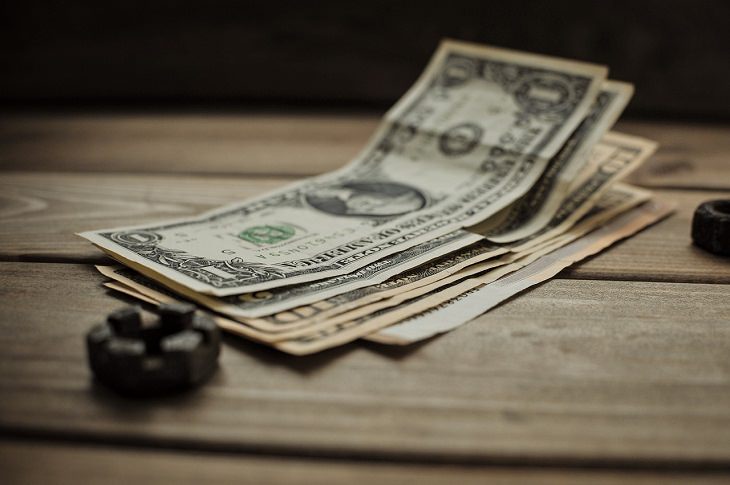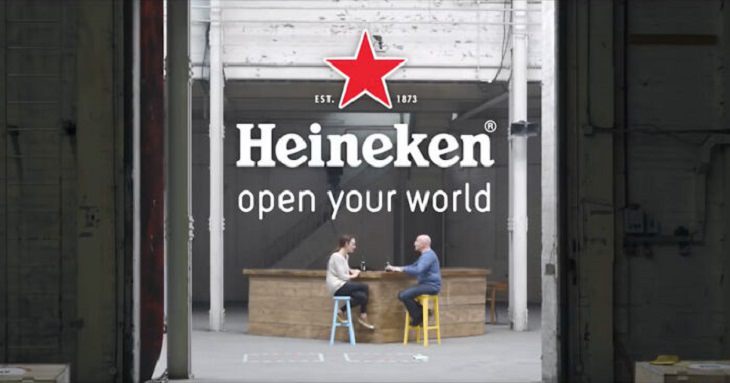
Human psychology works in strange ways, almost similar to that of smaller animals like monkeys or dogs, but still slightly more advanced. However, this added complexity is all we need to know that human beings are strange, extraordinary, and sometimes clueless. These brilliant and sweet social experiments show us that humans unconsciously do a great number of things, many of which are good and inspiring.

(Youtube)
This experiment was a quick but highly effective one that put couples to the ultimate test of assumption. The Danish brewing company Carlsberg filled a theater with surly and brutish men dressed head to toe in tough-biker attire, all enjoying the movie. An unsuspecting couple would enter the theater for their movie experience, they would find the only available seats were smack in the middle of all of these men.
Many couples left shortly after entering the theater. Some couples chose to stay, regardless of their impressions of the crowd, and made their way to the seats. The couples that stayed were rewarded with beers from all the biker boys as soon as they sat down. The goal of the experiment was to teach one very simple principle: Don’t judge a book by its cover!

(Facebook)
Road rage and rash driving are major problems all over the world. In an attempt to try to curb and change the behavior of drivers, the researchers behind the Volkswagen Fun Theory campaign initiated an immersive experiment. A camera was installed that would track the speed of drivers and impose a fine on speeders. Those fines were collected and put into a lottery fund that was given to obedient drivers.
Prior to the placement of the speed tracker, the average speed of drivers on that stretch was about 20 miles per hour. After the introduction of the Fun Theory campaign, that number reduced by a massive 22%, proving that a money-based incentive can act as an excellent motivator for good behavior. It also made a great argument in favor of the carrot-and-stick method, i.e., designating punishment for bad behavior and reward for good behavior.

(By ANG, Wikimedia Commons)
An interesting and simple experiment was conducted in 2007 to determine whether people value art more highly than appearances. Professional violinist Joshua Bell was asked to perform a 45-minute piece in the corridors of a subway in Washington D.C. He played a 6-part performance using a violin worth 3.5 million dollars.
Despite that, only 6 people stopped to watch his performance, less than 20 gave money and there was no applause at the end. When he finished playing, there was no lingering audience and he had earned only $32. However, his concert at Boston Symphony Hall conducted only 3 days prior had seats which sold for the whopping price of $100 each.

Most people are unlikely to consider the sheer volume of products in their local grocery that is provided by foreign countries. To emphasize this point, a supermarket in Hamburg, Germany named the Edeka supermarket, removed all products in the store that were supplied by foreign nations and not locally supplied.
The result was a supermarket full of empty shelves, much to the disappointment of most customers. The project was just a single day campaign. Despite its short life, it sent the customers of this store a very clear message about how different life would be without the cooperation and coordination of countries across the world.

In 1957, Stanford University conducted an experiment to determine how people develop cognitive dissonance in a social situation. Put simply, cognitive dissonance refers to a situation involving conflicting attitudes, beliefs, or behaviors. It is experienced as mental discomfort or stress when a person participates in an action that goes against one or more of them. To conduct this experiment, the researchers had participants individually perform a series of tasks designed to be boring. The reactions of the participants, which were mostly negative as intended, were observed.
Participants were then told they would be paid either $1 or $20 if they told the other participants in the waiting room that the tasks to be performed for the experiment were fun. It turned out that $1 was not considered a sufficient price for lying, due to which they experienced dissonance. However, nearly all the participants gave positive feedback on the tedious tasks to overcome that dissonance.

The Volkswagen Fun Theory Campaign continued their march toward changing behavior by teaming up with the fitness company Strotokan. The goal was to see if there would be any shift in preference if the staircase next to an escalator was made to look like piano keys. Each step was painted to resemble a corresponding key on a piano.
The hope behind the “Piano Stairs” project was to see if adding some clever designs and fun to the activity would make people more inclined to take the stairs. The experiment had extremely promising and positive results as people enjoyed themselves while using the staircase. Usage of the steps increased by a massive 66%, promoting exercise and creativity.

(Youtube)
The Heineken Worlds Apart project was a short and quick experiment. 6 strangers with different backgrounds were paired up. Each pair was told to build certain constructs, and while building, ask each other some questions. The idea was for each pair to discover differences in their belief systems while also working together to perform an activity. At the end of the session, participants had to choose if they would want to have a conversation with their partner over a beer.
Despite numerous varied opinions and perspectives being revealed throughout the activity, all 6 participants still chose to get a beer with their partners. This very simple yet well-thought-out experiment essentially sought to see if differences could stand in the way of enjoying a common interest like beer. And the results send out a great message.

In this age of technology, social media acts not only as a platform for personal and professional communication but also for major news updates. This experiment involved nearly 700,000 Facebook users and carried out numerous tests under a single massive experiment. The goal was to determine the effects of seeing only positive news or only negative news on an individual’s social media accounts.
Accordingly, in different phases, the same test was conducted. Participants were split into groups, one of which was provided only positive news stories in their feed, and the other provided only negative stories. The result was that people receiving only negative news were more prone to emphasizing negative emotions and using negative words, while the other group was left with a sense of compassion and happiness. The message was simple. We need bad news and good news to stay informed and stay positive!
Did you find these social experiments interesting? Be sure to share them!